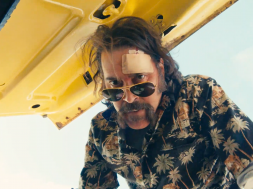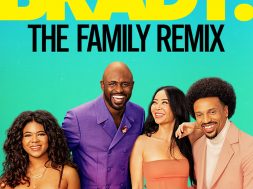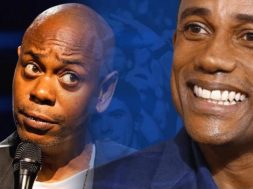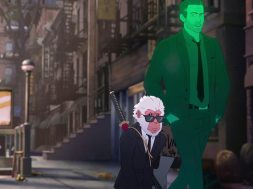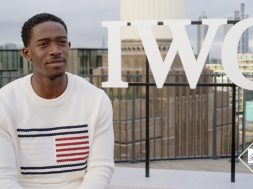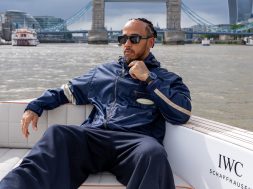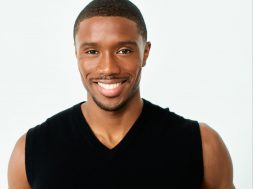
Previously Released on March 19th The Courier is Now Available On PVOD
In this true-life Cold War spy thriller, unassuming British businessman Greville Wynne (Benedict Cumberbatch) becomes entangled in one of the greatest international conflicts in history. Recruited by MI6 and a CIA operative (Angus Wright and 2018 Primetime Emmy® and 2018 & 2019 Golden Globe® winner Rachel Brosnahan, “The Marvelous Mrs. Maisel,” Best Actress in a TV Comedy Series), Wynne forms a covert partnership with Soviet officer Oleg Penkovsky (Merab Ninidze), and both men risk everything in a danger-fraught race against time to provide the intelligence needed to prevent nuclear confrontation and end the Cuban Missile Crisis.

On 16, October 1962, President John F Kennedy was handed high-altitude photographs taken from U-2 planes flying over Cuba that showed Soviet soldiers setting up nuclear-armed missiles on the island. The United States had been tipped-off that the Soviet Union was putting nuclear warheads on the Caribbean Island. The Cuban Missile Crisis saw the world on the brink of nuclear war.
In the wake of the 2016 Presidential election in the United States, scriptwriter Tom O’Connor was very curious about the history of Russian American espionage. “I started reading history books,” says O’Connor. “Oleg Penkovsky, played by Merab Ninidze in the movie, is a legendary source that the Americans had in the Soviet Union. One line of one book said Oleg Penkovsky’s contact was a British civilian called Greville Wynne. At that point, my screenwriter cap popped on.”

Rachel Brosnahan(Emily Donavan) The Courier
Courtesy Lionsgate
Jessie Buckley(Sheila) The Courier
Courtesy Lionsgate
“I remember my mum saying to me that people thought the world was going to end,” says director Cooke. “She remembers people crowding into churches who had never been to church.” The filmmakers had to convey to a contemporary audience who know that there was no nuclear war that such a scenario was not only feasible but that many feared it would be inevitable. Cooke says, “We started looking into how we could put that background into the film without ending up having to do lots of exposition about the Cuban Missile Crisis.”
In October 1962, Soviet ballistic missiles were being deployed in Cuba. President Kennedy demanded their removal. When Khruschev refused, both sides began preparations for a nuclear war. For 13 days, a policy of brinksmanship saw the world facing the threat of nuclear war. This sent many around the world into a state of panic. “What bought it home was Dominic describing the threat,” says Cumberbatch. “The world sort of held its breath, it’s not just a fight between two countries, it’s every country in between them that would be affected.”
O’Connor watched documentaries, newsreels and spoke to his parents as he incorporated the crisis into the screenplay, “Just trying to get a sense of that fear and helplessness that people felt that the world might end and there is not a God damn thing we can do about it.”
“You had ships sailing to Cuba with missiles, you had the Americans armed and ready and you had everybody hovering over buttons and codes,” says Cumberbatch. “It only takes a few hotheads in charge of the codes, a few polarised opinions and people shutting off and not having a dialogue for catastrophe to happen.”

Courtesy Lionsgate
Production Designer Susie Davies says, “It’s really difficult sometimes doing that era as it can become style over substance. You want the design to support the story, rather than to wave a flag saying ‘Ooh, look at this that we did’.”

Benedict Cumberbatch (Greville Wynne) Courtesy of Lionsgate 
Merab Ninidze(Oleg Penkovsky) and Benedict Cumberbatch (Greville Wynne) Courtesy of Lionsgate
“One of the things that I decided that I wanted to do was make Moscow and London feel similar,” says Cooke. “They weren’t that similar because they’re different architecture and so on, but I wasn’t going to do something that would exaggerate their differences.” The sets were designed to show the competition between the Soviet Union and the United States. Both superpowers were pursuing initiatives trying to demonstrate that their way of doing things created a better life for their citizens and more advanced technology.
“There was this big epic feeling of the architecture during that time because of the competition between the two countries, particularly in the sixties with Brutalist architecture and Soviet architecture,” says Davies. “For the British element, we decided that London would be very staid and solid.” To replicate the architecture of the era, the filmmakers scouted across Eastern Europe to find similar-looking buildings. Davies says, they knew what type of building they wanted, the architecture “was all about scale and power, oppressiveness and heaviness.”
LATEST POSTS
- Anchor Bay Entertainment Acquires “Cursed In Baja” Ahead Of Its World Premiere At This Year’s Frightfest Getting your Trinity Audio player ready… The founders of the revitalized Anchor Bay Entertainment, Thomas Zambeck and Brian Katz, have acquired the worldwide rights to the horror film CURSED IN BAJA, which will make its world premiere at this year’s… Read more: Anchor Bay Entertainment Acquires “Cursed In Baja” Ahead Of Its World Premiere At This Year’s Frightfest
- Cast Interviews-Get Into the Mix This Summer With ‘Wayne Brady: The Family Remix”Getting your Trinity Audio player ready… “Wayne Brady: The Family Remix” premieres on Freeform on Wednesday, July 24, at 10:00 p.m. EDT, next day on Hulu. Everyone knows Wayne Brady — actor, comedian, host, singer, and preeminent multihyphenate of this… Read more: Cast Interviews-Get Into the Mix This Summer With ‘Wayne Brady: The Family Remix”
- Tales Of The Teenage Mutant Ninja TurtlesGetting your Trinity Audio player ready… Paramount+ Reveals Additional Voice Guest Stars Featured In The All-New Original Animated Series of The Teenage Mutant Ninja Turtles, Premiering On Friday, August 9 Paramount+ revealed the full lineup of celebrity… Read more: Tales Of The Teenage Mutant Ninja Turtles






